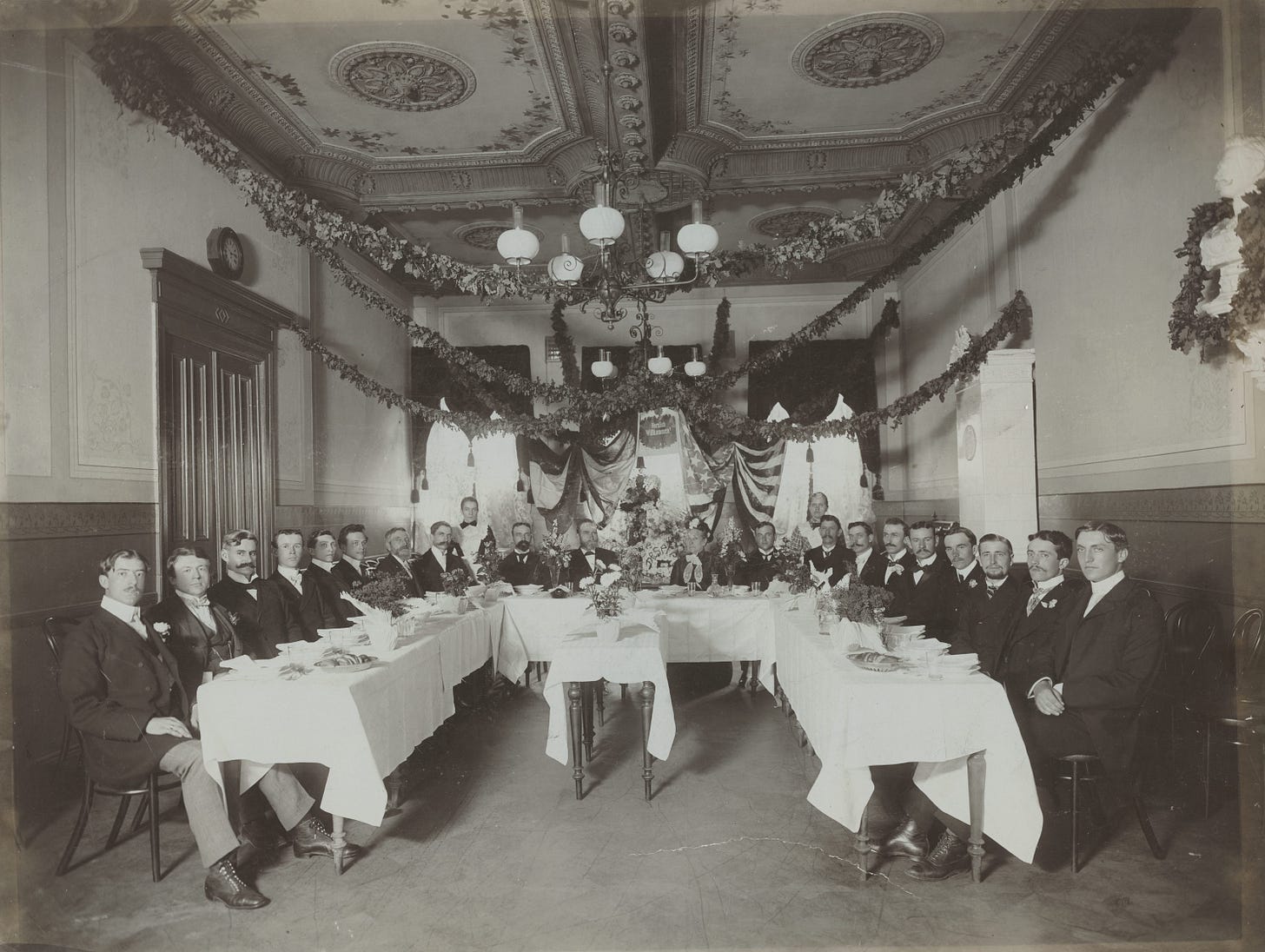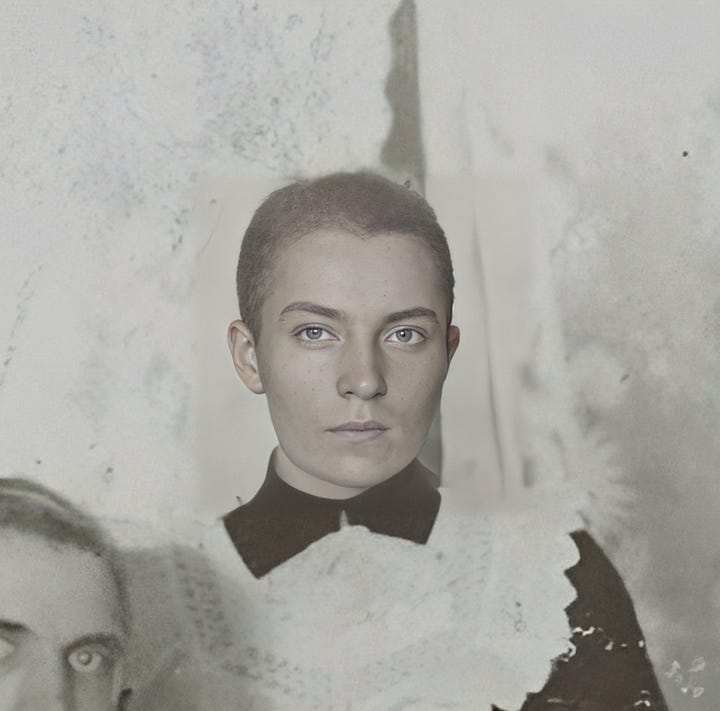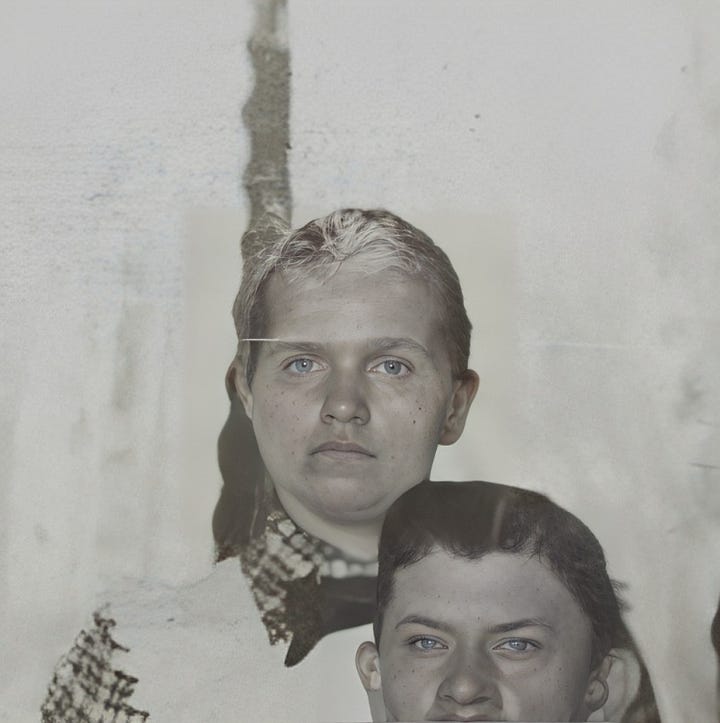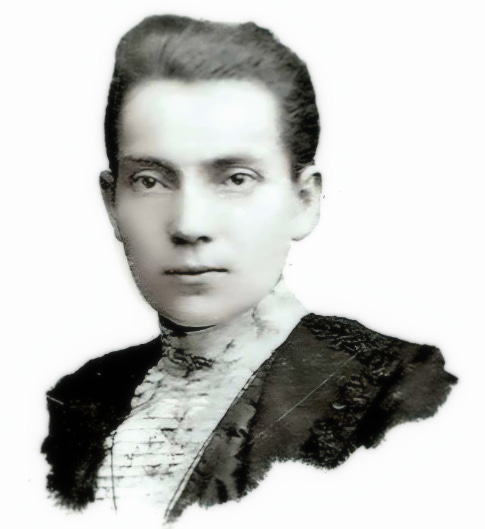From the background to the foreground
Prioritising those who have been overlooked in history
On the afternoon of 3 August 1901 in Hamburg, Germany, thirty-year-old Margarethe Ehlers was probably putting on the final touches for a reception of Latter-day Saint missionaries and leaders. The ornate room that was being used had been decorated with wooden tables draped in white tablecloths in a horseshoe with foliage hanging from the ceiling. The German and United States of America flags hung behind the head of the table next to a sign declaring “Herzlich Willkommen”. A floral display in the form of a beehive sat below the flags with the name “Deseret” emblazoned on the front.
Margarethe was also a Latter-day Saint and had been since 1894. Her husband, Johann, had joined the Church a couple of years after her, but together they raised their three young children in the faith. Wearing a dress and white pinafore she and another Latter-day Saint, Augusta Näschke, were at the reception to serve the group as maids.1
The full-time missionaries, who were a mixture of Germans and Americans, sat at the table, probably catching up and chatting, as they waited for Francis and Rhoda Lyman to arrive with Hugh Cannon, their mission president, and Chariton Ferrin, the conference president. Francis was an Apostle and president of the European Mission on a tour of the continent and visiting the different missions. The meal was an attempt by the missionaries and Saints in Hamburg to give Francis and Rhoda a lasting memory of their time in the city before they continued their tour to Denmark.
Margarethe watched as the sixteen missionaries serving in Hamburg arose to greet President Lyman as he and the others arrived. Soon after, at 2.50 p.m., the group posed for a photograph to record the occasion. Margarethe and Augusta Näschke stood in the corners of the room along with the Latter-day Saint missionaries and leaders. With a bright flash, the shot was taken and attention could be turned to the fine feast awaiting them.
Dishes and utensils were carefully placed around the tables along with napkins, floral decorations, and plates of bread. Soup bowls were placed on top of the plates and the smell of delicious, fresh food probably wafted through the room. Before long the food was served and happy chatter would have floated through the room as the sounds of utensils and dishes clattered.

Margarethe had been serving as president of the Hamburg Relief Society for several years and Augusta Näschke was her second counsellor. It had originally been formed in 1890 with six sisters and now there were more than 45 on the rolls with an average attendance of 25.2 There had been a branch of the Church in Hamburg in the 1850s but it ended up folding on account of emigration, disaffection, and low numbers.3 In 1888 a branch was formed again and by 1901 a Sunday School was established. At the time there was generally an attendance of about 100 people at Church meetings.4 The Ehlers were at the heart of Church activity and regularly hosted visiting church leaders.
As the meal ended, Francis Lyman was asked what his favourite song was to which he replied, ‘School thy feelings, oh my brother.’ The missionaries then sang it for him. After the rendition, Margarethe and Augusta cleared away the dishes.5 After the dishes were cleared the missionaries and leaders remained where they were for a five-hour Priesthood meeting. President Hugh Cannon recorded the event:
…we listened to reports and testimonies from the sixteen elders and instructions from Bro. Lyman. Bro. Schulthess and I also spoke. I never listened to a more impressive talk than that made by Pres. Lyman. He promised every elder present in the name of Jesus Christ and by the authority which he holds that every sin and transgression which he had ever committed would be forgiven him and would be blotted out of the book of remembrance, if we would from this time forth strive to obey the Lord and work righteousness. I was greatly impressed, and I think all were.6
An article published in The Latter-day Saints’ Millennial Star noted the following from the trip:
Knowing that Hamburg would be the last place President Lyman visited before leaving the German Mission, the Elders in that Conference desired to give him and party a reception which would help him to always remember his visit in the German Mission. A fine dinner was prepared in the hall for all Elders and the visiting party. The hall was beautifully and artistically decorated. On that occasion, for the first time in his life, Apostle Lyman announced our good old hymn "School thy feelings, O my Brother" to be his favorite, after which all present joined in singing it with heart and soul. "After a splendid Conference in Hamburg, President Lyman and wife proceeded to Denmark feeling well in every way and expressing themselves as being well pleased with their visit in Germany.7
Food and eating are central to most cultures, and Latter-day Saints are no different. Meals for visiting church leaders are often prepared to assist them as they work to busy schedules, and almost always this is unpaid work performed by women, such as Margarethe. Who bought the food? Who arranged the flowers? Who hung the foliage and flags? Who set the tables? Who cooked the food? Who washed the dishes? So much work goes into preparing events, such as this, but accounts of such events tend to focus on leaders which in essence means Priesthood leaders.
These hours of preparation and work are often overlooked entirely or reduced down to simple statements without affording any recognition to those who worked so hard. Hugh Cannon noted: “The meal was a very good one.”8 A missionary in attendance recorded: “A beautiful table spread with the good things of the earth.”9 Historical attitudes to women can sometimes make research into their experiences more difficult, but by working in-between the lines and triangulating sources their voices can be amplified.


The efforts of countless women have been lost to history. When we think of conferences, regional gatherings, baptisms, and virtually any other event there is nearly always someone in the background who has put in a tremendous amount of work.
The hall in Hamburg was beautifully decorated and it is clear that a large amount of effort was put into the preparation of the event. Margarethe and her fellow sisters worked without pay or expectation of praise. No surviving account records their work or acknowledges their praise. It is only through careful research and analysis that this event, from more than 120 years ago, has been reclaimed and repositioned with the efforts of the Relief Society more centrally fixed in the retelling of the event.
Margarethe later emigrated to Utah and remained an active member of the Church until her death in 1940. Her life was filled with hours of service rendered to others and she helped make the world a better place. It is my intention to try and reclaim such voices and ensure the echoes of the past can be heard again today.
The other maid is not definitively identified. It is possible that it is Augusta Näschke who served as a counsellor in the Hamburg branch Relief Society presidency.
Note and Relief Society report of the Hamburg Germany Branch, MS 7692, bx. 30, fd. 13, CHL.
Hans Guertler, Hamburg Branch History (unpublished), pp. 3-13, MS 31803, bx. 3, fd. 2, CHL.
Ibid.
Hugh J. Cannon, journal (1901-1902), pp. 27-29, MS 28333, bx. 2, fd. 3, CHL.
Hugh J. Cannon, journal (1901-1902), pp. 27-29, MS 28333, bx. 2, fd. 3, CHL.
Arnold H. Schulthess, ‘President Lyman’s Travels,’ The Latter-day Saints’ Millennial Star, Vol. 63, No. 33 (1901), pp. 530-531.
Hugh J. Cannon, journal (1901-1902), p. 28, MS 28333, bx. 2, fd. 3, CHL.
William S. Owen, journal (Vol. 3), p. 16, MS 1768, bx. 1, fd. 3, CHL.


